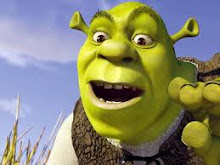
Thursday, October 30, 2008
Sri Lanka Traditional Dancing
Traditional Dances of Sri Lanka
Dance was then initiated in Sri Lanka during the 4th century B.C for the purpose of expelling natural disasters, sickness and greet people and land. At the end of Polonnaruwa period (15th century A.D.), chola influence came into Sri Lanka and was adopted in Sri Lanka folk dancing.
The classical dance forms are associated with the performance of various rituals and ceremonies which are centuries old and are based on the folk religion and folk beliefs going back to times before the advent and acceptance of Buddhism by the Sinhalese people in the third century B.C. These rituals and ceremonies reflect the values, beliefs and customs of an agricultural civilization of Sri Lanka.
With the time, unique dancing forms were developed and varied from each other according to regional and local traditions. Today there are three principal dancing forms that can be seen in Sri Lanka.
Each of the style quite differ from each other from the dress, drums, songs and way of dancing and movements of hands, legs and fingers.
The drum used in Kandyan dancing is known as the GETA BERE, the drum in Ruhunu dancing as the YAK BERE, and drum in Saparagamu dancing as the DAVULA
Kandyan Dancing
Developed from the period of Kandyan kings. The dance imitates movements of animals as there are dancing of elephant and peacock, The costumes of Kandyan dancers are colorfull with white, red, yellow and black mixed. The male dancers with their bare chests decorated with exquisitely silver regalia and spectacular headgear; silver bangles are also worn on the arms and ankles. The performance is companied with hectic rhythms of drums called "gata beraya". There are 18 main dances in Kandyan Style. More >>
Sbaragamuwa dances
The dances are usually performed in Ratnapura, relating to the worshipping of God Saman much revered by local people. There are 32 main dances in Sabaragamiwa Style. More >>
Pahatharata dance
Dances in low country are highly ritualistic. This form of dance is performed to appease evil spirits which cause sickness. The dancers wear masks depicting many characters varied in forms of bird, demons, reptiles, etc. There are 18 main dances related to pahatharata style known as the Daha Ata Sanniya held to exorcise 18 types of diseases from the human body
Wanni Dances
Even though not popular a dance form exsit in nothern parts of Sri Lanka by veddha decedents. This form of Dancing involve only few steps and lots of rituals and singing.
Dance was then initiated in Sri Lanka during the 4th century B.C for the purpose of expelling natural disasters, sickness and greet people and land. At the end of Polonnaruwa period (15th century A.D.), chola influence came into Sri Lanka and was adopted in Sri Lanka folk dancing.
The classical dance forms are associated with the performance of various rituals and ceremonies which are centuries old and are based on the folk religion and folk beliefs going back to times before the advent and acceptance of Buddhism by the Sinhalese people in the third century B.C. These rituals and ceremonies reflect the values, beliefs and customs of an agricultural civilization of Sri Lanka.
With the time, unique dancing forms were developed and varied from each other according to regional and local traditions. Today there are three principal dancing forms that can be seen in Sri Lanka.
Each of the style quite differ from each other from the dress, drums, songs and way of dancing and movements of hands, legs and fingers.
The drum used in Kandyan dancing is known as the GETA BERE, the drum in Ruhunu dancing as the YAK BERE, and drum in Saparagamu dancing as the DAVULA
Kandyan Dancing
Developed from the period of Kandyan kings. The dance imitates movements of animals as there are dancing of elephant and peacock, The costumes of Kandyan dancers are colorfull with white, red, yellow and black mixed. The male dancers with their bare chests decorated with exquisitely silver regalia and spectacular headgear; silver bangles are also worn on the arms and ankles. The performance is companied with hectic rhythms of drums called "gata beraya". There are 18 main dances in Kandyan Style. More >>
Sbaragamuwa dances
The dances are usually performed in Ratnapura, relating to the worshipping of God Saman much revered by local people. There are 32 main dances in Sabaragamiwa Style. More >>
Pahatharata dance
Dances in low country are highly ritualistic. This form of dance is performed to appease evil spirits which cause sickness. The dancers wear masks depicting many characters varied in forms of bird, demons, reptiles, etc. There are 18 main dances related to pahatharata style known as the Daha Ata Sanniya held to exorcise 18 types of diseases from the human body
Wanni Dances
Even though not popular a dance form exsit in nothern parts of Sri Lanka by veddha decedents. This form of Dancing involve only few steps and lots of rituals and singing.
Subscribe to:
Comments (Atom)
